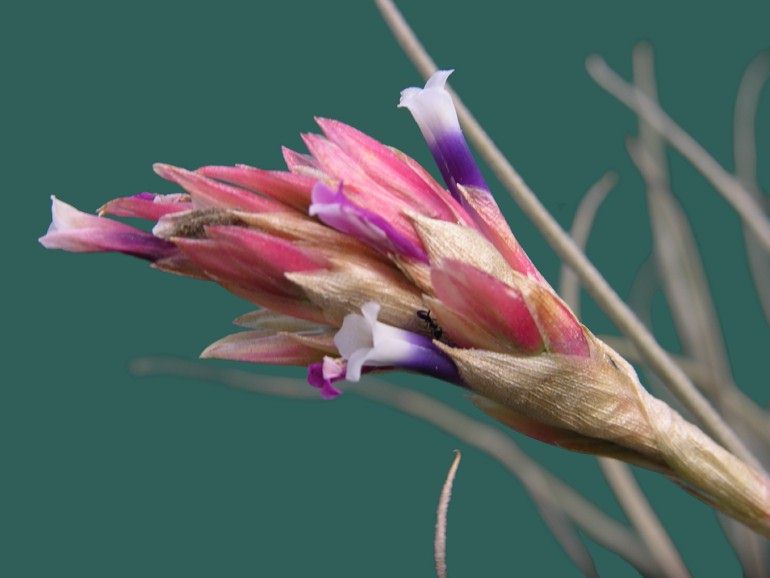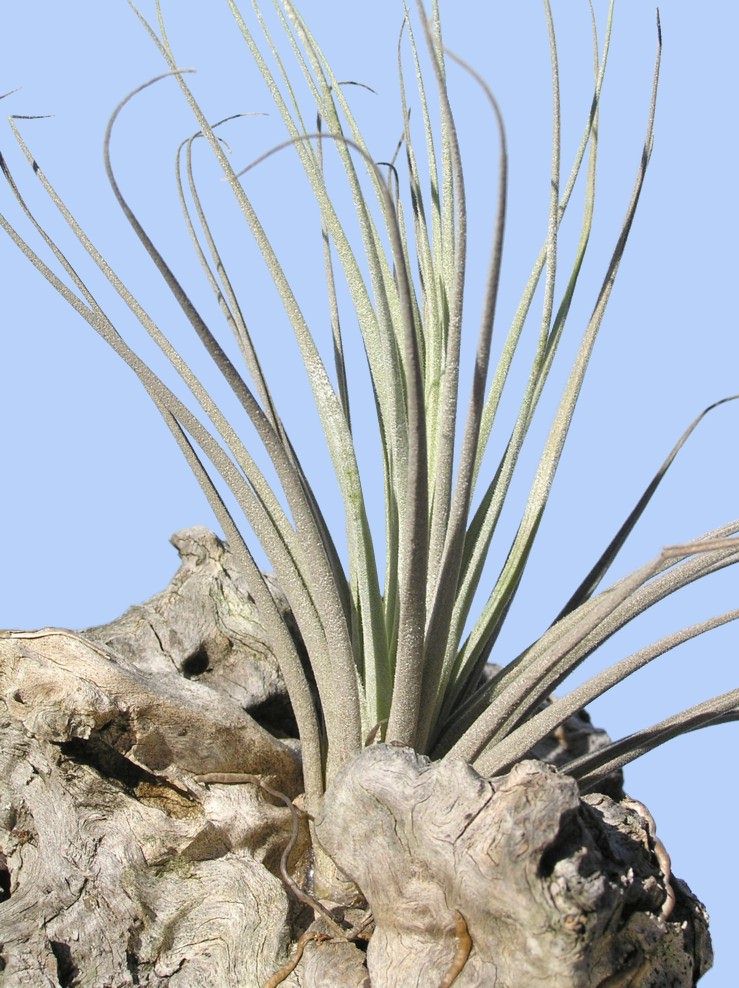

For Tillandsia tectorum Smith and Downs (1977) says “Leaves densely imbricate along the stem, polystichous, 2dm long, densely tomentose-lepidote; which includes T. saxicola Mez in Fedde, Repert. III. 41.1906 as a synonym. This is described in Mez (1935) as (my translation from the Latin) “Leaves densely covering the stem, often bent one way, up to 0.25m long, above the sheath up to 15mm wide, then with incurved tip, subulate-filiform gradually narrowing, convolute towards the tip, rigid, covered with many hairy lepidotes.
Hromadnik (2005) in her review of the T. tectorum complex says “Leaves densely imbricate along the stem, polystichous, 12-25 cm long, densely tomentose-lepidote;”
I asked Lieselotte about our problem child which had subappressed trichomes and she advised “We also have collected this plant, we still have it in our collection, and I once saw some imported plants from Knize.
But the Llacanora plant is not the only one with appressed scales, there is another form, epiphytic(!), from a locality very distant from Llacanora and near to the coast in the Rio Moche-valley on 950m, Prov. La Libertad.
Also the large form near Huaraz (once described as T. saxicola) has very appressed scales. So I did not think of making a variety or something else with these plants.”
Botanically, it would seem these forms with appressed scales are in limboland because of differing points of view as to their diagnostic importance. Therefore, I am recording this difference by giving this form found in Llacanora the cultivar name of ‘Llacanora’. We know that a very similar plant is being grown in Australia by Len Colgan who imported his plant from Doetterer in Germany who we know imports from Knize in Peru. We do not know where Knize collected his plant but we also know that a similar plant was imported from Knize by Eric Gouda in the Netherlands.
Peter Tristram advises “As for the non-furry tectorums, I have them from 4 sources - Mick R and I collected some near Llacanora in 2003. Some were sourced indirectly from Knize in 2006 on my first trip to Europe, maybe via Renate who visited Doetterer on the way to the meeting in Frankfurt. These were not great survivors though and were a rather spindly form. I also obtained a clump from Jan Claus in Berlin in 2011 which pups like mad but has not bloomed for me, source unknown though possibly Knize. The only one I have bloomed was the one from Mick and I have posted pictures of it before - compact head form, like the Llacanora plants and most probably from there.”